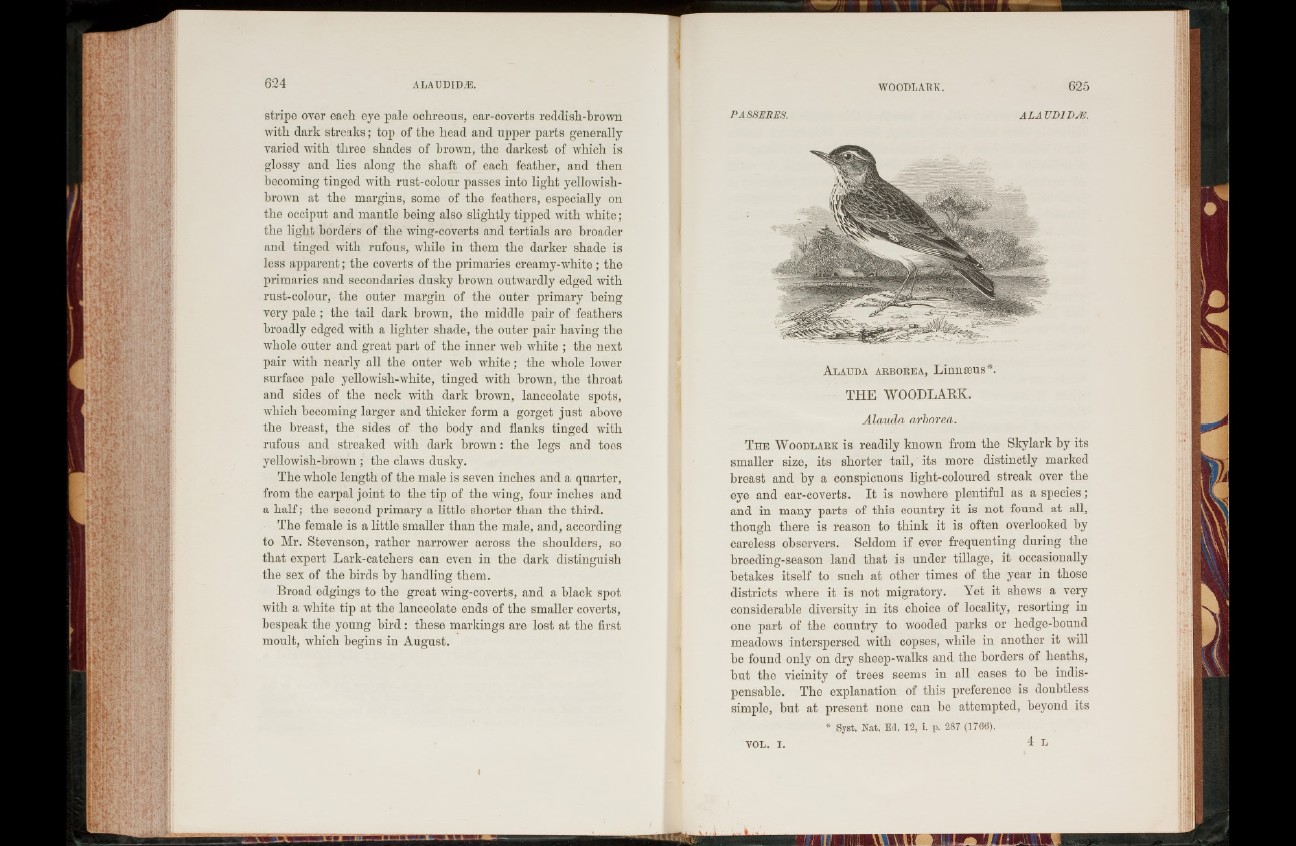
stripe over each eye pale ochreous, ear-coverts reddish-brown
with dark streaks; top of the head and upper parts generally
varied with three shades of brown, the darkest of which is
glossy and lies along the shaft of each feather, and then
becoming tinged with rust-colour passes into light yellowish-
brown at the margins, some of the feathers, especially on
the occiput and mantle being also slightly tipped with white ;
the light borders of the wing-coverts and tertials are broader
and tinged with rufous, while in them the darker shade is
less apparent; the coverts of the primaries creamy-white ; the
primaries and secondaries dusky brown outwardly edged with
rust-colour, the outer margin of the outer primary being
very pale ; the tail dark brown, the middle pair of feathers
broadly edged with a lighter shade, the outer pair having the
whole outer and great part of the inner web white ; the next
pair with nearly all the outer web white; the whole lower
surface pale yellowish-white, tinged with brown, the throat
and sides of the neck with dark brown, lanceolate spots,
which becoming larger and thicker form a gorget just above
the breast, the sides of the body and flanks tinged with
rufous and streaked with dark brown: the legs and toes
yellowish-brown ; the claws dusky.
The whole length of the male is seven inches and a quarter,
from the carpal joint to the tip of the wing, four inches and
a half; the second primary a little shorter than the third.
The female is a little smaller than the male, and, according
to Mr. Stevenson, rather narrower across the shoulders, so
that expert Lark-catcliers can even in the dark distinguish
the sex of the birds by handling them.
Broad edgings to the great wing-coverts, and a black spot
with a white tip at the lanceolate ends of the smaller coverts,
bespeak the young bird : these markings are lost at the first
moult, which begins in August.
P ASSURES. ALAUD1DJE.
A l a u d a a r b o r e a , Linnseus*.
THE WOODLARK.
Alauda arborea.
T h e W o o d la rk is readily known from the Skylark by its
smaller size, its shorter tail, its more distinctly marked
breast and by a conspicuous light-coloured streak over the
eye and ear-coverts. I t is nowhere plentiful as a species;
and in many parts of this country it is not found at all,
though there is reason to think it is often overlooked by
careless observers. Seldom if ever frequenting during the
breeding-season land that is under tillage, it occasionally
betakes itself to such at other times of the year in those
districts where it is not migratory. Yet it shews a very
considerable diversity in its choice of locality, resorting in
one part of the country to wooded parks or hedge-bound
meadows interspersed with copses, while in another it will
be found only on dry sheep-walks and the borders of heaths,
but the vicinity of trees seems in all cases to be indispensable.
The explanation of this preference is doubtless
simple, but at present none can be attempted, beyond its
* Syst. Nat. Ed. 12, i. p. 287 (1766).
VOL. 1. 4 L